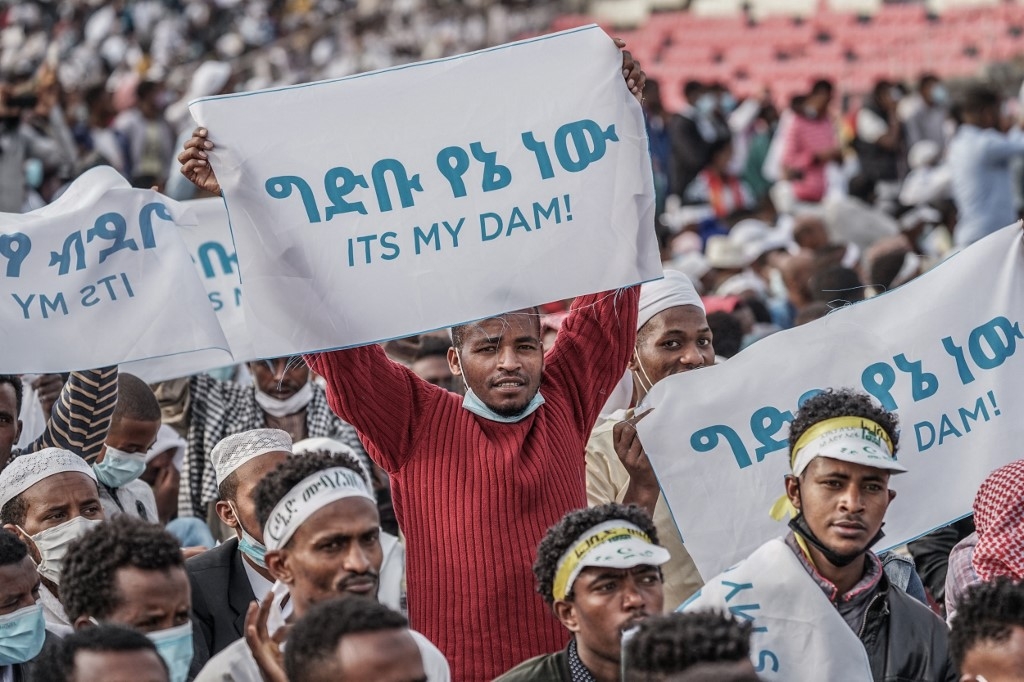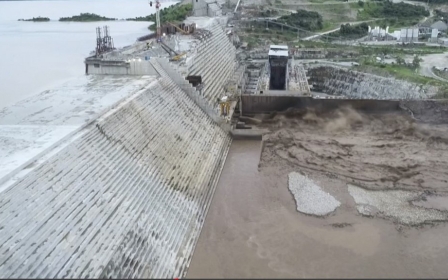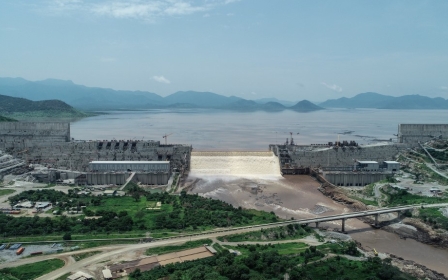Defying Egypt and Sudan, Ethiopia confirms second filling of Nile dam

Ethiopia said on Monday that it had hit its second-year target for filling a colossal dam on the Blue Nile River, a tributary of the Nile, that has stoked tensions with downstream countries Egypt and Sudan.
"The first filling already was done last year. The second one is already done today. So today or tomorrow, the second filling will be announced," an official told AFP, adding that there is now enough water stored to begin producing energy.
Water Minister Seleshi Bekele later confirmed the milestone, which officials had earlier predicted would come in August.
In a post on Twitter, he attributed the accelerated timeline to "extreme rainfall" in the Blue Nile basin.
The Grand Ethiopian Renaissance Dam (GERD) has been at the centre of a regional dispute ever since Ethiopia broke ground on the project in 2011.
Egypt and Sudan view the dam as a threat because of their dependence on Nile waters, while Ethiopia deems it essential for its electrification and development.
Talks held under the auspices of the African Union (AU) have failed to yield a three-way agreement on the dam's filling and operations, and Cairo and Khartoum have demanded Addis Ababa cease filling the massive reservoir until such a deal is reached.
But Ethiopian officials have argued that filling is a natural part of the dam's construction process and cannot be stopped.
Rainy season
In early July, Egypt raised objections after receiving official notice from Ethiopia that it had begun filling the reservoir behind its controversial dam for the second year in a row.
In May, Sudan accused Ethiopia of starting the second filling of the dam, a claim that Addis Ababa denied.
The UN Security Council met earlier this month to discuss the project, although Ethiopia later criticised the session as an "unhelpful" distraction from the AU-led process.
Egypt claims a historic right to the Nile dating from a 1929 treaty that gave it veto power over construction projects along the river.
A 1959 treaty boosted Egypt's allocation to around 66 percent of the river's flow, with 22 percent for Sudan.
However Ethiopia was not party to those treaties and does not see them as valid.
In 2010, Nile basin countries, excluding Egypt and Sudan, signed another deal, the Cooperative Framework Agreement, that allows projects on the river without Cairo's agreement.
The Nile's main tributaries, the Blue Nile and White Nile, converge in Khartoum before flowing north through Egypt to drain into the Mediterranean Sea.
The process of filling the GERD's reservoir began last year, with Ethiopia announcing in July 2020 it had hit its target of 4.9 billion cubic metres.
The goal for this year's rainy season - which had been announced before the first cycle was completed - was to add 13.5 billion cubic metres. The reservoir's capacity is 74 billion.
With the second-year target hit, the dam can run the first two of its 13 turbines, Seleshi said Monday on Twitter.
"Intensive efforts are being made for the two turbines to generate energy," Seleshi said, adding that "early generation" could be realised "in the next few months".
'Political value'
The $4.2bn dam is ultimately expected to produce more than 5,000 megawatts of electricity, making it Africa's biggest hydroelectric dam and more than doubling Ethiopia's electricity output.
Egypt relies on the Nile River for as much as 90 percent of its fresh water and sees the dam as an existential threat. Sudan is concerned about the operation of its own Nile dams and water stations.
Ethiopia had initially planned output of around 6,500 megawatts but later reduced its target.
The first two turbines should produce 750 megawatts of electricity, increasing national output by roughly 20 percent, Addisu Lashitew of the Brookings Institution in Washington told AFP.
'The dam is seen as a national symbol, a unifying symbol. It's one of the very few things that bring together people from all walks of life in Ethiopia'
- Addisu Lashitew, Brookings Institution
It is "a significant amount" for an economy that frequently faces power shortages and is sometimes hobbled by power rationing, he said.
The milestone would also have "political implications" for a country going through "a very difficult time" in no small part because of the eight-month-old war in its northern Tigray region, Addisu said.
"The dam is seen as a national symbol, a unifying symbol. It's one of the very few things that bring together people from all walks of life in Ethiopia," he said.
"Definitely the government will try to extract some political value from the second filling."
Sudanese Water Minister Yasser Abbas warned in April that if Ethiopia went ahead with the second-stage filling, his government "would file lawsuits against the Italian company constructing the dam and the Ethiopian government".
As for Egypt, experts say the problem is deeper than the GERD; the real issue lies in the potential building of future dams that may directly affect Egypt.
If the dam is built without a legal and binding agreement, other Nile Basin countries may be encouraged to build their own dams in the future.
Middle East Eye delivers independent and unrivalled coverage and analysis of the Middle East, North Africa and beyond. To learn more about republishing this content and the associated fees, please fill out this form. More about MEE can be found here.






